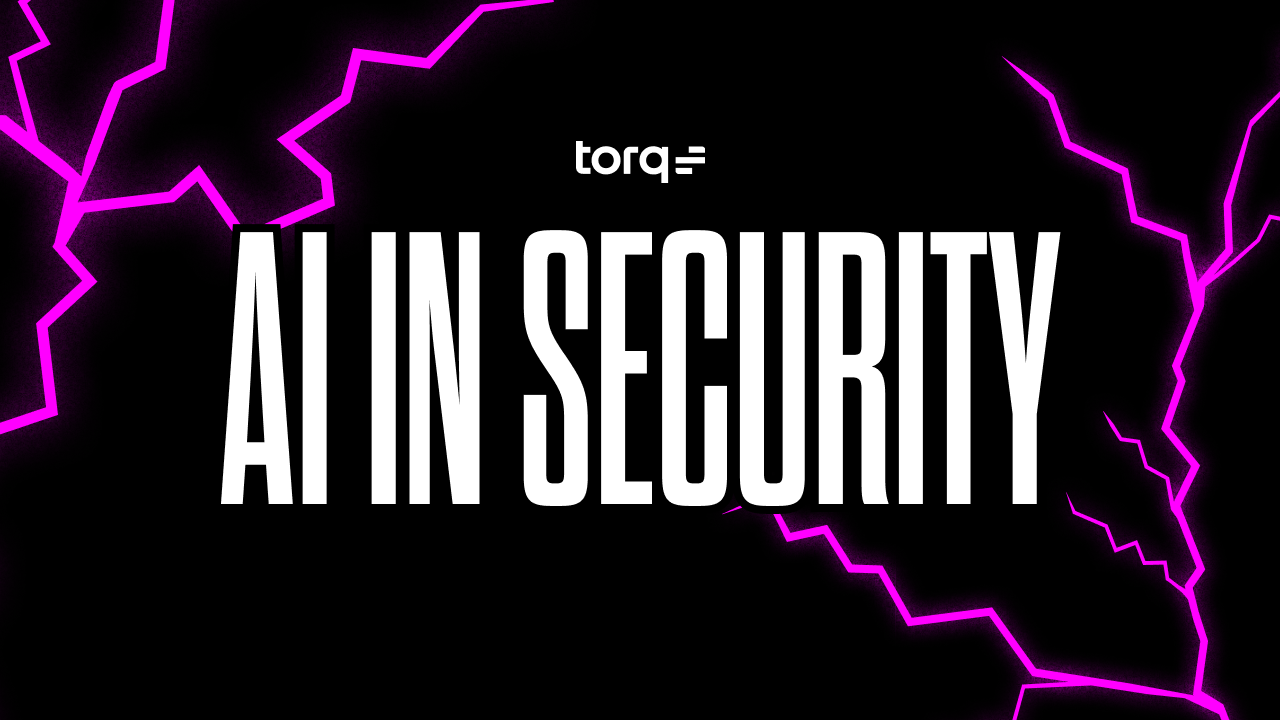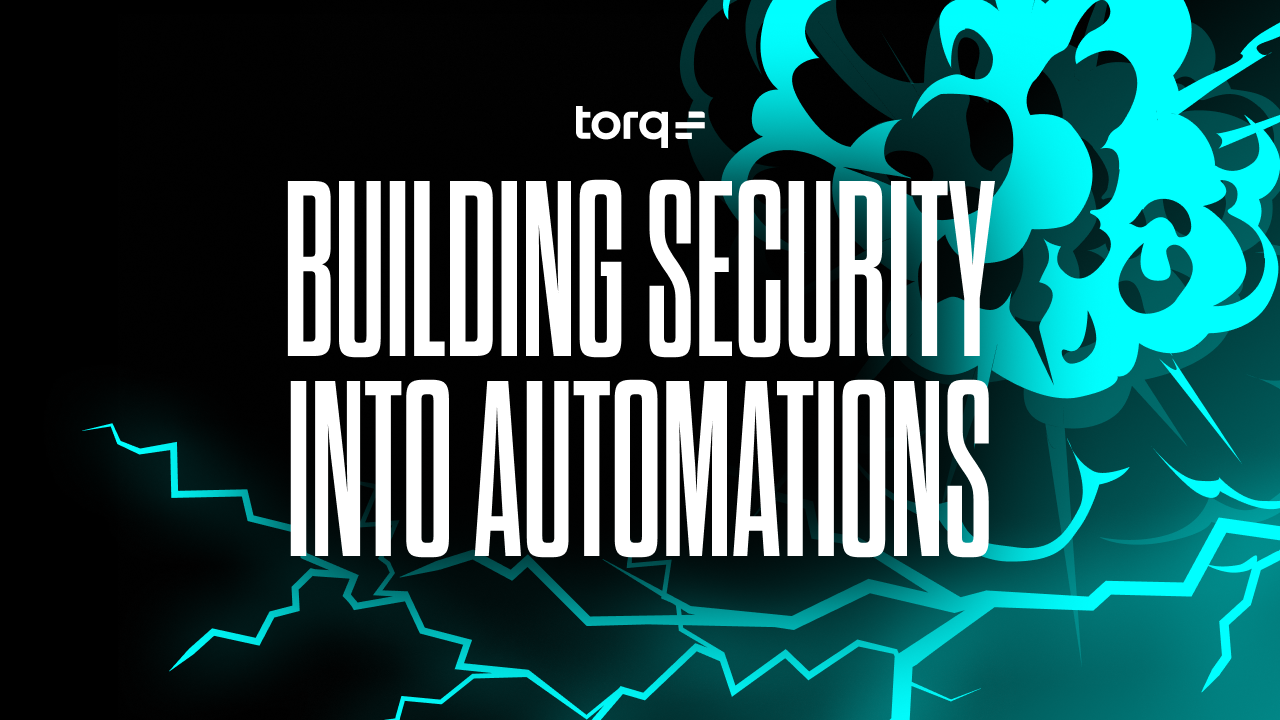Contents
From zero-day exploits to morphing malware, cybercriminals are increasingly using automation and artificial intelligence (AI) to stay ahead — and traditional defenses can’t keep up. That’s why forward-thinking security teams are turning to AI in cybersecurity to predict, prevent, and respond to threats faster than any human ever could.
AI has quickly shifted from a “nice-to-have” to a mission-critical capability for modern SOCs. Platforms like Torq Hyperautomation™ are making this shift seamless with built-in intelligence and automation that deliver real results.
With a multi-agent system led by Torq Socrates, adaptive playbooks, and real-time behavioral analysis, Torq gives you the speed, precision, and scalability to detect, investigate, and remediate threats at machine speed without overwhelming your team.
Why Traditional Cybersecurity Can’t Keep Up
Legacy security architectures weren’t built for today’s threat landscape. The nature, volume, and velocity of attacks are simply too much for manual approaches and static tools.
- Sheer threat volume: Security operations centers (SOCs) are bombarded with a flood of data. Billions of events stream from cloud platforms, endpoints, networks, and third-party tools. Filtering through this data for real signals is nearly impossible without intelligent assistance.
- Limited human resources: Security talent is in short supply, and burnout is rampant. Analysts can only triage so many alerts before accuracy and morale drop. AI can help cut through the noise and surface only what matters.
- Tools are disconnected: Disconnected systems and disparate dashboards slow down detection and response. Without centralized visibility, threats slip through the cracks. With AI, disparate data sources can be correlated automatically, so nothing falls through the cracks.
What is AI in Cybersecurity?
Artificial intelligence in cybersecurity involves using intelligent algorithms and machine learning models to detect, investigate, and respond to cyber threats. These systems go beyond traditional automation by learning from past data, identifying patterns, and making informed decisions without constant human oversight.
AI in cybersecurity uses artificial intelligence to monitor, analyze, detect, and respond to cyber threats in real time. AI-powered systems continuously scan networks to identify vulnerabilities, detect suspicious activity, and prevent potential attacks before they escalate. By analyzing vast amounts of behavioral and contextual data, AI establishes baselines and flags anomalies that could indicate malware, unauthorized access, or other security risks.
Beyond detection and prevention, AI also plays a key role in prioritizing risks, automating incident response, and enabling security automation at scale. This reduces human error, accelerates threat mitigation, and frees up cybersecurity teams to focus on strategic initiatives instead of repetitive manual tasks.
How AI in Cybersecurity Prevents Cyberattacks
Artificial intelligence has become a game-changer in how organizations detect, investigate, and respond to cyber threats. At its core, AI in cybersecurity leverages agentic AI, intelligent automation, and behavioral analytics to act faster and smarter than traditional tools ever could. Here are some ways AI works in security operations:
- Advanced threat detection: AI continuously ingests and analyzes vast volumes of logs, telemetry, and network data. It identifies subtle anomalies deviating from normal behavior — clues pointing to zero-day exploits, insider threats, or stealthy lateral movement. These threats often bypass legacy systems, but AI can detect them early, reducing dwell time and potential damage.
- Automated incident response: When known threats are detected, AI instantly executes predefined response playbooks without waiting for human intervention. From isolating compromised devices and disabling user accounts to revoking access credentials or initiating forensic analysis, AI automation ensures that threats are neutralized before they escalate.
- Behavioral analysis and anomaly detection: AI cybersecurity applications include real-time user and entity behavior monitoring to establish baseline patterns. When deviations occur, such as unusual login locations, phishing emails, irregular access to sensitive files, or unexpected privilege escalation, AI flags and escalates them as potential threats, enabling proactive defense.
- Enriched threat intelligence: AI doesn’t operate in a vacuum. It correlates internal security data with external threat intelligence feeds to enrich alerts with context, improving prioritization and clarity for analysts. This enhanced visibility helps security teams understand attacks’ scope, origin, and intent more quickly and accurately.
- Proactive phishing detection: AI-powered systems intelligently analyze email metadata, language patterns, and behavioral signals to detect phishing attempts in real time. By identifying suspicious URLs, spoofed senders, and anomalous requests for sensitive information, AI can flag and neutralize phishing threats before users even see them, reducing the risk of social engineering attacks across the organization.
- Cost-efficient security: AI reduces the burden on overstretched security teams by automating routine investigations, triage, and threat correlation. This enables organizations to achieve enterprise-grade protection without continuously expanding headcount, cutting operational costs while maintaining (and even improving) overall security effectiveness.
- Automated remediation: AI can also accelerate recovery. From isolating affected endpoints and resetting credentials to restoring systems from clean backups, AI-driven workflows ensure rapid remediation and minimal disruption. This shortens downtime, protects business continuity, and keeps incidents from escalating.
- Predictive defense capabilities: The future of AI in cybersecurity lies in its predictive capabilities. Instead of reacting to known indicators of compromise, AI anticipates threats by identifying vulnerabilities and patterns that could lead to a breach. It then recommends or automatically implements preemptive measures — hardening systems before attackers strike.
How Torq Uses AI to Power Security Operations
Rather than applying AI as a surface-level enhancement, Torq treats it as a core capability, enabling more intelligent, scalable, and autonomous security operations.
AI-Enhanced Playbooks
Traditional playbooks follow linear paths that often fail when an unexpected event occurs. Torq’s AI-enhanced workflows are dynamic; they adapt in execution based on real-time inputs, threat intelligence, and behavioral anomalies. For example, if an endpoint begins communicating with a known malicious IP during an investigation, the playbook can autonomously pivot, escalate the issue, and initiate quarantine without human input.
Automated Threat Analysis Across Hybrid Environments
Security environments are no longer confined to a single perimeter. Torq’s multi-agent system ingests, normalizes, and correlates data across multi-cloud, on-prem, and hybrid systems. This ensures end-to-end visibility, rapid threat detection, and intelligent triage across every layer of the modern enterprise. Whether correlating EDR alerts with cloud logs or detecting unusual user behavior across SaaS platforms, Torq enables AI-powered insights that drive action.
Policy Enforcement Without Human Intervention
Using contextual awareness and learned baselines, Torq enforces security policies automatically, whether by disabling suspicious accounts, rotating credentials, or blocking data exfiltration attempts. These policy enforcement actions are triggered based on AI-driven evaluations of risk, not just predefined rules, making them far more effective at keeping up with novel and fast-moving attacks.
Behavior-Based Triggers for Autonomous Workflows
Rather than relying solely on static alert thresholds, Torq uses behavior-based triggers to launch workflows when unusual activity is observed. This allows the system to detect subtle indicators of compromise, like a user logging in from an unusual location or a sudden spike in data transfers, and initiate proactive investigations or mitigations before a threat escalates.
Always Learning, Always Improving
Whether you’re deploying Torq AI Agents for the SOC or interacting with Torq Socrates, the platform constantly refines its models and decision-making logic. By learning from past incidents, analyst input, and environment-specific context, Torq ensures your SOC automation gets smarter daily. Not only does Torq respond to threats; it anticipates and neutralizes them, creating a more resilient, proactive, and self-healing SOC.

5 Benefits of Using AI in Cybersecurity
As cyber threats increase in speed, volume, and sophistication, traditional security tools struggle to keep up. Integrating AI solutions into your security operations equips your team with the speed, scale, and intelligence needed to move from reactive defense to proactive protection. Here are some of the benefits of AI.
1. Faster Threat Detection and Incident Response
In the race against attackers, speed is everything. AI systems accelerates threat detection and incidence response by analyzing millions of signals across your environment in real time.
Torq’s AI-powered platform automatically correlates telemetry from cloud, on-premises, and hybrid sources to identify anomalies the moment they occur. Once detected, Torq’s AI-enhanced playbooks launch instant, context-aware response actions — shrinking dwell time, reducing Mean Time to Detect (MTTD) and Mean Time to Respond (MTTR), and helping security teams contain threats before damage occurs.
2. Reduced False Positives and Alert Fatigue
One of the most pressing challenges for security analysts is the overwhelming number of alerts, most of which are false positives. AI drastically improves signal-to-noise ratio.
Torq’s intelligent agents use behavioral analysis and historical data to suppress irrelevant alerts and elevate those that indicate real risk. This helps eliminate alert fatigue and gives your SOC team the clarity to focus on legitimate cyber threats without wasting time or attention on false alarms.
3. Enhanced Visibility Across Hybrid Environments
Today’s digital environments are complex and decentralized, spanning cloud infrastructure, on-prem servers, endpoints, SaaS tools, and edge devices. AI applications in cybersecurity make it possible to ingest, normalize, and analyze telemetry across all of these domains.
Torq enhances this capability by layering AI enrichment on top of unified data streams, delivering deep, actionable insights across the full attack surface. This ensures that teams have a complete and continuous view of activity, no matter where threats emerge.
4. Continuous, Adaptive Protection
Unlike static rule-based systems, AI is dynamic. It learns from both historical and real-time data to adapt to new and emerging threats. Torq’s AI-enhanced workflows evolve alongside your adversaries, constantly adjusting detection thresholds, response tactics, and automation triggers based on new threat intelligence and system behavior.
With AI, SOC teams can predict potential vulnerabilities in their security systems by simulating attack scenarios and assessing weaknesses. This proactive approach allows for timely remediation measures, ultimately hardening defenses before threats materialize.
5. More Efficient Security Operations With Fewer Resources
Hiring and retaining skilled cybersecurity talent remains a massive challenge. AI in the SOC helps close that gap. Torq empowers lean security teams by automating Tier-1 investigation, decision-making, and remediation tasks.
This boosts productivity and creates a scalable model where a lean team can manage the workload of a much larger SOC. AI can also reduce the strain on human resources by automating routine cybersecurity tasks. Security teams can focus on strategic initiatives and complex incident responses, rather than getting bogged down in repetitive alert monitoring and analysis, ultimately increasing operational efficiency.
The Future of Cybersecurity is AI-Driven — And It Starts with Torq
As adversaries become more sophisticated, so must the tools we use to fight them. From prediction to prevention to rapid response, AI in cybersecurity enables a new era of intelligent defense.
Torq’s AI-powered Hyperautomation platform ensures that your SOC is staying ahead. With adaptive workflows, real-time analysis, and intelligent orchestration, Torq transforms your cybersecurity operations from reactive to proactive.
Explore how AI can take your security operations to the next level.




